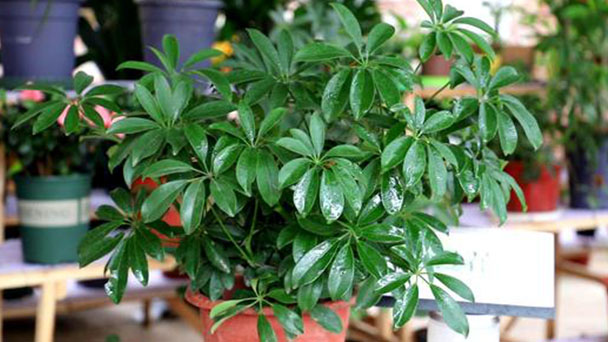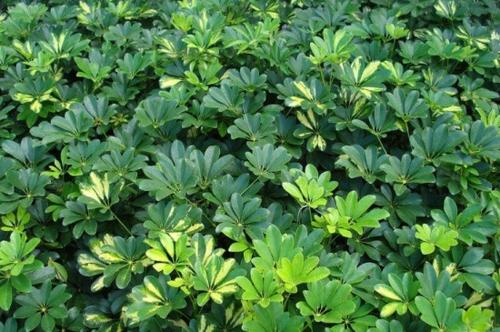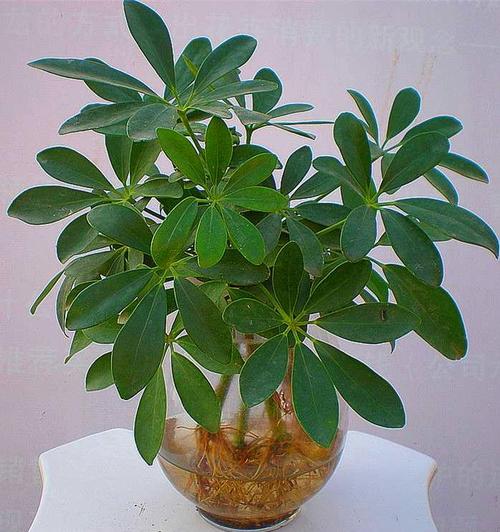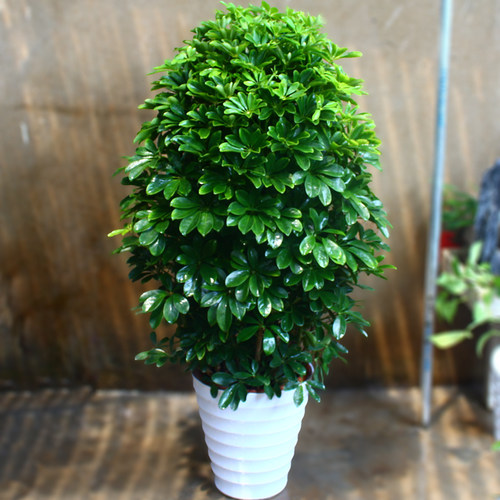Schefflera profile
Written by Maggie
Oct 19 2021

Schefflera is a perennial spring plant with plump and graceful plants and a strong flavor of The Times. Schefflera is a common plant in evergreen broad-leaved forests in tropical and subtropical regions. Schefflera is a nectar plant in winter in southern China. Its wood material is soft, used as matchstick and raw material for making steamers. Leaves and root bark are used as medicinal herbs for the treatment of influenza, injuries and other diseases.
Schefflera picture
Morphological characteristics of Schefflera
Schefflera is a large evergreen tree or shrub, with plant heights ranging from 30 ~ 80cm under cultivation conditions and up to 40m in origin. Schefflera is densely branched, branchlets stout, wrinkled when dry, densely stellate pubescent when young, soon glabrous. Schefflera has palmate compound leaves, lobules 5 ~ 9, elliptic, oval-shaped, 9 ~ 17cm long and 3 ~ 5cm wide, with long tips, leathery, dark green, shiny leaves. Flowers are small, most white, fragrant, flowering winter spring. The berry is globose, black, ca. 5 mm in diam., flowering from November to December, fruiting December to January of the following year.
Schefflera growth habit
Schefflera prefers warm, humid and semi-overcast environments. The suitable temperature for growth is 16 ~ 27℃, and it can still grow normally under high temperature above 30℃. The temperature in winter is no less than 5℃. Schefflera prefers wet to dry, and its stems and leaves flourish under conditions of high air humidity and sufficient soil moisture. But too much water, causing waterlogging, will cause root rot. Schefflera has a wide range of light adaptation and can grow in full, half or half sunshine. However, there is a certain relationship between the intensity of light and the color of the leaves. The color of the leaves tends to be lighter under the intensity of light, and the color of the leaves is dark green under the semi-shade. The fertile, loose and well-drained sandy loam soil is preferred. Potting soil is a mixture of peat, leaf rot and coarse sand.
Schefflera distribution area
Schefflera originated in the South Pacific Islands and was introduced to Britain in 1658 and later expanded to Europe and America. Oceania and Africa are distributed, China is mainly distributed in Xizang (Chayu), Yunnan, Guangxi, Guangdong, Zhejiang, Fujian and Taiwan, tropical and subtropical areas of evergreen broad-leaved forest common plants, sometimes also born on sunny slopes, altitude of 100 ~ 2100 meters.Japan, Vietnam and India also have them.

Schefflera propagation methods
Schefflera propagation commonly used cutting and seeding methods:
1.Cutting propagation: in April to September, cut 1 year old top branches, long 8 to 10 cm, remove the lower leaves, inserted in the sand bed, keep wet, room temperature at 25℃ or so, 30 to 40 days after the insertion can take root.
2. Sowing propagation: indoor basin sowing was used in April to May. The appropriate temperature for germination was 20 ~ 25℃. The seedling height was 5 ~ 8 cm, and the pot was moved 4 cm at a time.
The main value of Schefflera
1. Garden use: Schefflera is suitable for the hotel lobby, library reading room and museum exhibition hall, presenting a natural and harmonious green environment. The leaves absorb nicotine and other harmful substances from the smoke-filled air and convert them through photosynthesis into harmless plant-owned substances. In addition, it reduces the formaldehyde concentration by about 9 milligrams per hour.
2. Schefflera is a nectar plant in southern Winter.
3. Schefflera can be used as medicine. It can stop bleeding, relieve swelling and pain, promote blood circulation and remove blood stasis. The indications are rheumatic bone pain, fracture, wound swelling and pain, bleeding from knife injury.

Read Next: Schefflera Propagation Methods
Latest Updated
- Benefits of Bugleweed - 7 Science-backed Health Benefits
- Bugleweed Dangers & Side Effects - Is It Poisonous?
- How to Plant Evergreen Trees - What You Should Know
- When to Plant Evergreens - Grow Guide for Evergreen Trees
- 12 Wonderful Evergreen Shrubs for Your Garden
- 12 Popular Evergreen Plants with Pictures for Beginners
- When And How To Prune A Lilac Bush Like a Pro
- How to Grow & Care for Lilac Vine (Hardenbergia Violacea)
- Japanese Lilac Tree (Syringa Reticulata) Care & Propagation Guide
- Shumard Oak Pros and Cons - What to Know
Popular Articles
- Winter maintenance of Antirrhinum Majus
- How to Grow Terminalia Mantaly Tree
- How to Grow and Care for Crossostephium Chinense
- How to grow Antirrhinum Majus in spring
- Peristeria Elata (Dove Orchid) Profile: Info & Care Guide
- Underwatered Snake Plant (Sansevieria Trifasciata) - Signs And How To Fix
- How to Care for Brazilian Jasmine Plant (Mandevilla Sanderi)
- How to Grow & Care for Graptopetalum Purple Delight in Summer
- Rosa Chinensis (China Rose): Plant Growing & Care Tips
- How to Care for Baby Sun Rose (Aptenia Cordifolia)
